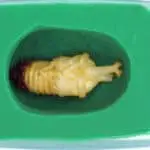Beetles might seem like armored tanks of the insect world, but when they first emerge as adults, they’re more like energy-saving mode laptops. Newly emerged beetles enter a dormant stage (a.k.a. hibernation) where they don’t eat and barely move. It’s like their “charging up” period for the busy lives ahead.
In this guide, we’ll explore why beetles go dormant, what you should do to keep them safe during this time, and how to recognize when they’re ready to start living their best beetle lives.
Why Do Beetles Have a Dormant Stage?
Beetles undergo complete metamorphosis, a transformative process that’s basically their version of a superhero origin story. During this time, their bodies undergo major renovations: old organs are destroyed, new ones are built, and their reproductive system develops.
Even after emerging as adults, beetles aren’t quite ready for prime time. They need the dormant stage to stabilize and develop their newly-formed structures. During this time, they live off the energy reserves built during their larval stage. Until their reproductive systems are fully developed, they can’t mate or produce viable offspring.
Do I Need to Do Anything for My Dormant Beetle?
If the Pupation Chamber Is Intact
Lucky you! If your beetle is still nestled in its pupation chamber, you can relax. The chamber is a safe, moist environment that protects the beetle from predators, parasites, and disturbances. Your only job? Leave it alone.
If the Pupation Chamber Is Broken
Sometimes, you might need to break the chamber. Maybe you’re low on space, want to check on your beetle, or you’re eager to know its exact age. Whatever the reason, once the chamber is gone, you’ll need to step up to create a safe environment for your beetle.
How to Care for a Dormant Beetle
- Prepare a Suitable Container
Use a ventilated container filled with moist substrate. The substrate should be about 2-3 times the height of the beetle, giving it enough room to burrow and feel secure. - Maintain the Right Moisture Levels
The substrate should be moist enough to hold its shape when pressed but not dripping. Regularly spray water to keep it damp but avoid overdoing it—too much moisture can harm the beetle. - Provide a Calm Environment
Place the container in a dark, quiet spot. Minimize vibrations and disturbances, as these can stress the beetle and cause it to use up its energy reserves prematurely. - Control the Temperature
Maintain the recommended temperature range for your beetle species. If you want to prolong the dormant stage (e.g., to sync male and female beetles for breeding), keep the temperature at the lower end of the range. - Guard Against Pests
Ensure the container is secure from ants, pets, or curious children. A beetle’s dormant stage is its most vulnerable time, so it’s your job to keep it safe.
How to Tell If Your Beetle Has Exited Dormant Stage
When a beetle becomes active, it’s game on! You need to feed it immediately, as its energy reserves from the larval stage are nearly depleted. But how can you tell it’s time without checking every day?
For Larger Beetles
Lay a soft paper towel on top of the substrate around the time the beetle is expected to become active. If the towel gets torn, it’s a sure sign your beetle has woken up and started moving.
For Smaller Beetles
Level the substrate evenly. If you notice disturbances or tracks on the surface, your beetle has likely emerged from its dormancy and is ready for feeding.
If the Beetle Is in a Pupation Chamber
If the beetle breaks its own chamber, that’s your cue to start feeding it.
Pro Tips for Dormant Beetle Care
- Avoid Overchecking: Too much curiosity can disturb your beetle and drain its energy.
- Adjust Temperatures Wisely: Lower temperatures can delay activity but avoid extremes, as this can harm the beetle.
- Feed ASAP: Once your beetle becomes active, offer food immediately to replenish its energy reserves.
By understanding the dormant stage and following these care tips, you’ll ensure your beetle transitions smoothly into its active phase. Whether you’re a seasoned beetle keeper or just starting, this guide will help you provide the best care for your hibernating friends.


